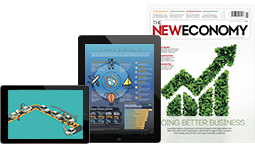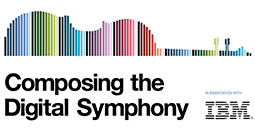E-readers: Opening a new chapter
Strong reception for the Kindle, the brainchild of Web retailer Amazon, is attracting a growing number of developers looking to tap interest in devices that let consumers read newspapers, magazines and books in a digital form that updates wirelessly and saves paper. By Baker Li
Strong reception for the Kindle, the brainchild of Web retailer Amazon, is attracting a growing number of developers looking to tap interest in devices that let consumers read newspapers, magazines and books in a digital form that updates wirelessly and saves paper. By Baker Li
Ask C.T. Liu about future growth engines for his company, LCD maker AU Optronics, and he whips out his Kindle e-book in lieu of an answer.
Sony Corp has joined the paperless wave with its own e-readers, partnering with Google to offer public domain books that are no longer protected by copyright.
Other believers in the dawn of a paperless age include Taiwan’s Netronix, which is making similar models with touchscreens, and Dutch Polymer Vision, set to soon introduce a pocket e-reader with rollable displays.
“We see it as a new industry,” said Liu, a senior vice president at AU, the world’s No.3 LCD maker whose panels are part of Dell, Hewlett-Packard and Apple PCs, as well as Sony LCD TVs.
“It replaces paper, printing, publishing, text books, and so on,” said Liu, in charge of AU’s consumer display business.
The growing number of models could help to bring down prices and boost sales, making these portable readers the next breed of must-have gadgets.
Weighing less than a typical paperback, e-books use a new generation of light, flexible and interactive display, or e-paper. Once the power is off, its images remain unchanged on the screen as it needs no added light source to read.
Because they require no backlighting like traditional LCDs, e-books consume far less power and are also much lighter. A typical Kindle can be read for days without recharging.
The bright future of e-books is particularly attractive to major LCD makers in Asia, including AU and hometown rival Chi Mei Optoelectronics Corp, at a time when they are struggling with sluggish sales of PCs and flat-screen TVs.
AU, which booked a record loss in the October-December quarter, is branching out to the new display sector by buying a 21 percent stake in e-paper specialist SiPix Imaging Inc.
The End of Paper?
Amazon.com Inc’s Kindles have proved a hit since their launch in 2007. Citigroup estimated the US online retailer sold a half-million Kindles in 2008, about one-third more than the number of iPods sold by Apple in its first year.
Some critics argue that e-books could become the victim of their own success if cellphone makers take notice and start to incorporate the newer LCD technology into their own models and include similar reading applications.
Other kinds of devices could also try to incorporate ebook-like applications.
“There will be more low-cost digital reading platforms coming out. Netbook PCs, for example, are much cheaper,” said Jeremy Huang, who tracks the e∞book market for the Market Intelligence Centre, a private industry researcher in Taiwan.
Netbooks, low-cost mini-notebook computers, sell for as little as $299, while a Kindle retails for $359 and the latest model of the Sony Reader is priced at about $349.
Market research firm iSuppli Corp forecasts global e-book display revenue will rise to $291m by 2012, representing an annual growth rate of 143 percent from 2007. That is still much smaller than about $72bn for large LCDs last year.
To help drive the e-reader market, some analysts say book publishers could subsidise a low-cost e-reader, or even give one away, with a multi-year subscription, similar to how telecom operators subsidise cellphones in return for service contracts.
The use of e-paper displays in other devices, such as signs, could also help to build economies of scale, bringing down costs.
Supporters imagine a day when e-paper versions of portable newspaper and magazine readers might be rolled up or folded, and carried to the beach or read on the train by commuters.
The timing of e-readers seems particularly good as the ink-stained newspaper market is struggling and some papers are cutting their print editions due to the recession and as more people go online to get news for free.
In February, US-based Plastic Logic signed strategic deals with media partners, including the Financial Times, USA Today and Zinio, for its first e-readers to target business users. The devices boast a large display and weigh less than many printed magazines.
In South Korea, LG Display Co Ltd has been developing A4-size color flexible e-paper among other potential products for the e-reader market.
“Screens will replace papers, that’s given. But I doubt whether e-books will make a sizeable market in the next two years,” said Park Hyun, an analyst at Prudential Investment & Securities.
“They are preparing for the new business, but it won’t mean much for their business or earnings until the market grows in size.”













